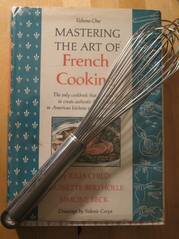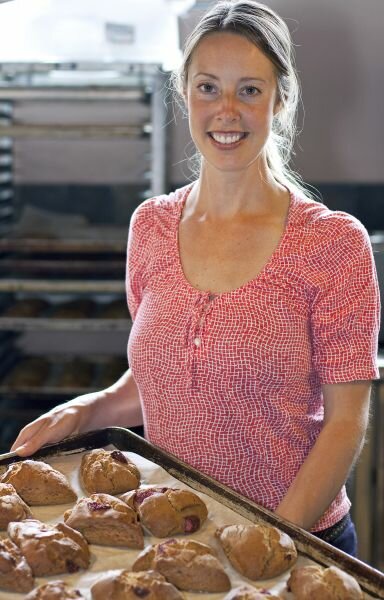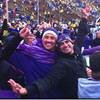 The SunBreak's own Rachael Coyle--also the Pastry Chef at Restaurant Le Pichet--is making a houseparty out of cooking school. She's beginning a series of pastry classes (held at a friendly house on Phinney Ridge) on Saturday mornings, focusing on baking fundamentals. Classes are limited to six students, and include a light lunch.
The SunBreak's own Rachael Coyle--also the Pastry Chef at Restaurant Le Pichet--is making a houseparty out of cooking school. She's beginning a series of pastry classes (held at a friendly house on Phinney Ridge) on Saturday mornings, focusing on baking fundamentals. Classes are limited to six students, and include a light lunch.
Rachael was previously a pastry instructor for Sur la Table for five years, and designed pastry classes that are used in their culinary programs nationwide. (Her degree in Pastry Arts is from the French Culinary Institute in New York, but she's not snooty at all.)
Says Rachael:
In the first class, we'll be making pie crust, and because it is April, we will be making Rhubarb Pie. We'll cover: technique for making delicious flaky, all-butter crust, tips for rolling dough evenly (and into a shape that resembles a circle rather than a continent), and pie-assembly, as well as discussing all sorts of other, later-summer-type fillings. Each student will be making his/her own dough and with it, a rhubarb pie to take home. If this class fills up, please don't fret, I will add another one.
I don't particularly care for rhubarb pie, so if you go, see if you can interest her in a nice chocolate mousse, for the next lesson.
The class is Saturday, April 24, 10 a.m.-1 p.m., on Phinney Ridge as I've mentioned, and again, a light lunch is provided. Tuition is just $35 (cash or check only), which beats the hell out of the UW, who never include a light lunch. Bring an apron and a pie plate! To RSVP, email (or ask for information about other upcoming classes).
 Jennifer Katzinger (Photo: Rachelle Longé)
Jennifer Katzinger (Photo: Rachelle Longé)
"I had been exposed to gluten-free at a juice bar in Greenlake years ago, and I was baking there and I really had fun working with all their different flours, and so I was just familiar with other grains," Jennifer Katzinger said. "And so I just got thinking, there are so many baked goods you can get in the Northwest, but finding a baked good that is with whole grains, or dairy and egg-free was hard. Organic too. Hence the Flying Apron."
Katzinger and I were sitting in the corner of the Walnut Street Coffeehouse in Edmonds, her nine-month-old daughter Lily, wearing a white knit sweater, playing on the seat between us. Charming and enthusiastic, Katzinger was telling me about the genesis of her vegan, gluten-free bakery, which she opened with her father in the University District in 2002. Eight years and two moves later, the Flying Apron is still going strong, and in addition to recently becoming a mother, Katzinger is now an author: in November, Sasquatch Books published her first cookbook, Flying Apron's Gluten-Free and Vegan Baking Book ($21.95).
A Northwest native, Katzinger grew up baking. In her early teens, she was already working at Lake Street Bakery ("That was a warm and cozy and delicious atmosphere, and I felt so safe there"), but after getting her BA in English Lit at the UW, she pursued a degree in industrial design at the Pratt Institute in NYC before returning to Seattle. When her and her father, both in need of new career directions, decided over coffee one morning to open the Flying Apron together, the concept wasn't as expressly gluten-free as it eventually became. While Katzinger was an on-and-off again vegan, originally the bakery featured a couple items that used egg and dairy--the idea was to have something for everyone, and the gluten- and wheat-free products were as much a creative touch as a conscious choice.
What led Katzinger to purge her work of gluten and wheat was the ecstatic response of customers. Wheat and gluten intolerance are actually common allergies, and on top of that, there's Celiac disease, in which wheat gluten wreaks havoc on the small intestine. The responses of her customers, some of whom would burst into tears when they found themselves in a bakery they could actually eat at, deeply affected her.
"The symptoms are so broad and different," Katzinger told me of the various stories her customers have shared. "One woman, a really beautiful woman who'd come to the bakery often, she traveled for work a lot, and she had been gluten-free for a long time, and had to go to Italy on business. And she thought, 'What the heck? I'm going to have the lasagna.' And for her, it was actually something like a schizophrenic type of situation. She had an episode, and just realized she can't go down that road."
"And other people, it just took them so long to be diagnosed Celiac. I remember this young woman coming in, I think she was going to the UW, and for years she was going to the hospital with digestive issues. And they would say, 'Oh, you need to eat more bran.' And so she would eat more bran and keep going in, and they would say, 'Oh, I think maybe you have something mentally going on, because we don't see anything wrong with you, and yet you keep complaining about your digestive issues.' So they put her on anti-depressants, and she went to Bastyr after that, where they did an allergy test and a Celiac test, and said, 'You have Celiac, there's no reason for you to be on anti-depressants.' So there's some really unusual stories out there, but in the U.S. they're pretty common. I think it takes, on average, 11 years to be diagnosed with Celiac's disease."
In order to create the rich variety of tasty baked goods that have garnered her attention, Katzinger experiments with and uses a wide-variety of alternative flours and sweeteners. Her list of staple ingredients includes at least nine flours: brown rice, garbanzo bean, buckwheat, teff, quinoa, corn, fava bean, chestnut, and hazelnut. Her goods are also organic and avoid most highly-processed ingredients; she doesn't use standard sugar, and many recipes call for non-sugar sweeteners like agave syrup, maple syrup, or concentrated fruit juice.
Katzinger also tries to locally source as much as possible. Asked where she came by hazelnut flour, she exclaimed: "Holmquist Farms! They sell hazelnuts and hazelnut oil and hazelnut flour at the farmers' markets! And I think they're in some of the grocery stores, now."
The recipes in the book range from sweet morning pastries to cookies to cakes to breads. Asked whether any of the recipes were particularly meaningful to her, she told me, "The pecan pie recipe is very special, because my husband was very involved with that one. That was early on, when we met each other, that we did that recipe together. I met him through the bakery, actually. He was a customer, and he would come to the take-out window in the University District frequently, and we just became friends. I was going to delivery my very first wedding cake, and I was really nervous about it, just kind of sharing this with him not so much to invoke an invitation to help, but in any case, that's indeed what happened. He said, 'Can I give you a hand with that?' And I took him up on it, and we had a great time."
For eight years, the Flying Apron was Katzinger's life, and in some ways the cookbook represents the apex of that career. "I dedicated the cookbook to Lily," she said, looking down at her daughter, who'd long since let all her toys slip to the floor and was now playing with a saucer, sitting in her mom's lap.
"I wrote it while I was pregnant with her, and finished it right before she was born. And since her arrival, it's just completely changed me. Before she arrived, the bakery was what I gave my all to, my absolute all to. Since she's been in the world, it's been a wonderful experience, but it's been hard to give my all to the bakery and to give to my daughter, which is what I want to do. I didn't see that coming. I mean, I knew I'd love being a mom, but I had no idea how powerful that is."
She smiled at her daughter, who'd given up on the saucer and was now pawing her mom's face. "So I've actually just sold the bakery, believe it or not. The first day of my not being the owner was January first."
Katzinger is remaining on as a recipe consultant, developing new recipes when not dedicating herself to parenting. For her, it's apparent that the joy of baking is no longer the only reason to continue her work--today, Katzinger seems as inspired by the need for food like hers as the joy she gets from creating it.
"In my young adulthood, there were times when--I wasn't allergic to food, but I made choices: to be a raw foodist at one point, a strict vegan at others," she told me. "And actually, I was unhealthy for a while, someone with real food issues. So while I don't know what it's like to have Celiac, I know what it's like--and this by my own choice, so there are differences but similarities, too--I know what it's like to be an outcast with eating. And how painful that can be. So for people who have allergies, or Celiac, I'm excited to share with them these recipes that I think so many people will enjoy, so they can have a table that's abundant, full of sharing of food and stories, and that's inclusive."




Most Recent Comments